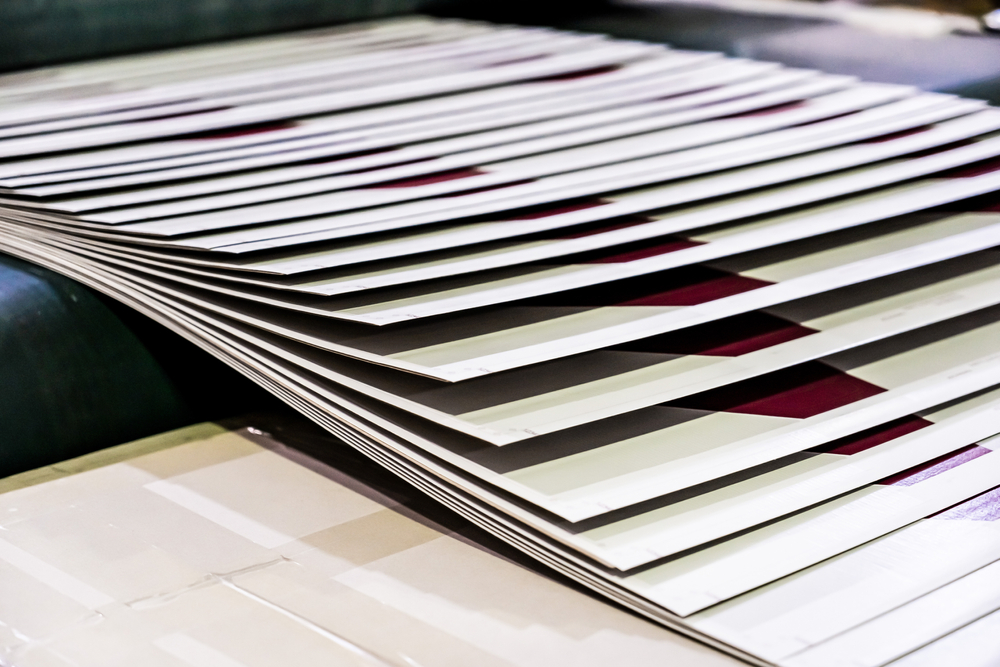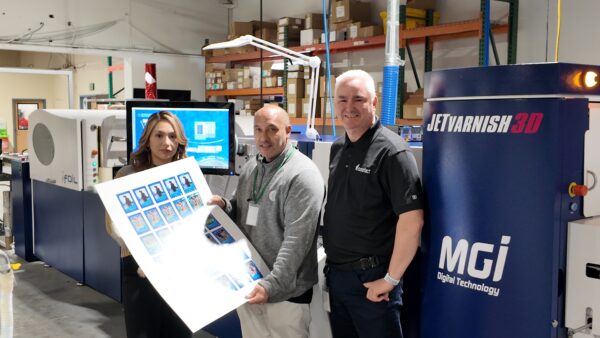The market is expected to surpass $32 billion by 2028.
There is no question that digital label and digital printing packaging is a rapidly growing printing segment. This is especially true for the digital printing of these products in light of shorter-run lengths, faster turn times, more environmentally sound printing, and more variability being demanded by brands and retailers. According to Insight Partners, the digital printing packaging market is expected to surpass $32 billion by 2028, a growth rate of more than 9% CAGR (compound annual growth rate) in the U.S. According to their report, that market value was $19 billion in 2022.
In addition to labels, this growth will be seen in flexible packaging, corrugated wrappings, and folding cartons. Direct-to-corrugated printing will likely play a role in this growth as well. As other areas of the printing industry continue to contract, including commercial printing and office imaging, this growing segment offers new opportunities for dealers/distributors in the print and imaging business.
Digital Printing Packaging: The Challenges
When we think about packaging, we typically think about long runs of the same images. Think Cheerios or mainstream motor oil brands, whose packaging and labels are produced in the millions. Large label and packaging converters pretty much own this market. A large company will not change suppliers for packaging unless there is a good reason. It is a mission-critical element of their business, and making supplier changes can be risky. However, it may be possible for commercial printers to partner with larger converters who have not yet introduced digital technology into the mix.
These large companies are generally not structured, nor do they want to handle small minimum order quantities. They are not necessarily the primary target for dealers itching to get into the higher margin, higher growth labels and packaging market unless they can engineer a trade relationship. But don’t despair. Commercial printers still have an opportunity in digital printing packaging.
According to Bankrate, in 2022, there were 33.2 million small businesses (businesses generating on average $1 million or less and up to $41.5 million in annual revenues) in the U.S. For these companies, smaller order quantities, fast time to market, agility in terms of making changes as market conditions change, and the ability to customize labels and packaging on a regional, or even local basis, are critical. Most large converters are not an option for these companies, leaving the field open for smaller printers or display graphics companies.
Another challenge for new entrants to the digital labels and digital printing packaging space is the requirement to add different technologies and incorporate different sales techniques in terms of whom to contact and how to get their attention. Some of the technology these commercial printers or display graphics companies that want to expand into packaging may not have in place already include CAD software for packaging design, folders/gluers, and special embellishment technologies such as foils, special varnishes, embossing, debossing, die cutting, etc. This also offers a good opportunity for office technology and services dealers to supply these capabilities and the consumables that accompany them.
Preparing to Enter the Market
Many dealers may already be partnering with organizations that offer some of these label and digital printing packaging solutions. For example, Konica Minolta formed an equity and business alliance in 2014 with MGI. Especially relevant are the JETvarnish 3D and Meteor lines offered by MGI and through Konica Minolta channels for embellishment.
Digital Spot UV coater DDC-810 is Duplo’ s entry-level product designed to meet the demand for spot UV coating. Standard Finishing offers an affordable die cutter, with its RD-3346 Die Cutter that die cuts and kiss cuts various flexible substrates up to 0.013″ thickness for digital and offset printed sheets, as well as a higher-end die cutter, the RD-N4055 Die Cutting System, which can handle substrates ranging from 127.9 to 400 grams per square meter (gsm).
For digital printing engines using EFI Fiery’s digital front end, there is excellent connectivity to most brands of finishing equipment for slitting, cutting, and creasing, increasing the productivity of this offline finishing.
AstroNova offers a lineup of TrojanLabel professional digital color label presses, overprinters, and specialty printer systems for many markets, many of which are quite affordable.
For businesses in signs and display graphics, the wide-format equipment they already have in place can print labels and packaging applications, either direct to rigid material such as corrugated or to other materials that may require lamination or die cutting as a finishing process.
These are just a few examples of equipment that may be easily accessible to office technology and services dealers. It is also worth noting that building a modular and integrated workflow is easier than ever before, with more cloud-based modules and better APIs for integration. And don’t forget industry associations and other organizations. Joining groups like the Ghent Workgroup connects you with a wealth of information, including how to use PDFs in packaging.
Applications and Services
For customers serving smaller brands, typical applications would include small runs of labels or packaging for test marketing, sales samples, and sustainable packaging solutions, as well as the smaller minimum order quantities (MOQs) they can’t get from larger converters. For a printer, being able to offer these smaller quantities and reduce inventory risk is a significant advantage.
In terms of higher-growth markets, craft beers, ready-to-eat foods, and cannabis packaging are at the top of the heap, often produced by smaller companies that require smaller MOQs, more opportunity for variability, and fast turn times. These smaller players are good opportunities where dealers can become subject matter experts, offering not only the products and consumables required for the printers to enter the market but also professional services to help them get started in sales, implementation, and post-sales support.
As mentioned earlier, another opportunity for digital printing packaging is providing products and services that enable printing companies to produce packaging that stands out on the shelf using digital embellishment techniques. Here again, is an opportunity for recurring revenues from consumables, including special inks, foils, and varnishes.
For office technology and services dealers, a critical success factor is developing expertise in labels and packaging, especially in terms of required infrastructure, sales methodologies, and professional services to assist printing companies in building the right mix of hardware and software to be successful. This may include web-to-print or web-to-pack solutions, specialized MIS such as LabelTraxx and others, and finishing, shipping, kitting, and fulfillment. Joining specialty industry associations such as TLMI and subscribing to industry trade publications will also help build expertise. Specialty trade shows focusing on labels and packaging are also useful in building that expertise.
In the labels and digital printing packaging space, one size does not fit all, and a modular approach is preferred, especially by printers serving smaller brands. One way to expand the modularity of your offerings is to engage with an API hub solution such as Zapier, which makes it easy to integrate with third-party solutions. The company has more than 5,000 applications to choose from. For applications with a robust API, integration with other Zapier solutions becomes easier and less time-consuming.
The Bottom Line
The opportunity is there, and it is significant in the labels and digital printing packaging space. If you don’t seize the opportunity, someone else surely will.




